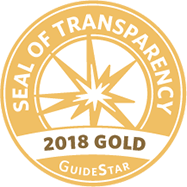Laura Messineo

(Sepsis Alliance note: Laura was honored as a 2014 Sepsis Hero)
I entered into the nursing profession in 1991. I never heard the words sepsis, severe sepsis, or septic shock until 2007. My specialty is critical care. Just imagine how many lives could have been saved if only we knew about this deadly disease sooner.
I first learned about sepsis in 2007. My healthcare system launched a sepsis program by identifying sepsis champions, creating a sepsis screening tool, developing order sets, and educating clinicians within our six hospitals. I was lucky enough to hear Dr. Manny Rivers discuss the research he conducted on sepsis. This was the first time I heard about early goal directed therapy (EGDT).
During my formal nursing education I received no information on sepsis. Since that time, I have challenged myself to learn everything I can about sepsis through lectures, articles, and attending conferences such as the American Association of Critical Care Nurses’ (AACN) National Teaching Institute (NTI) and the Society of Critical Care Medicine’s Annual Congress.
Professionally, sepsis is an emergency and it should be treated as such. However, the challenge is educating clinicians to know the early warning signs and symptoms. If we don’t identify sepsis we can’t treat it with EGDT.
Frequently I see missed opportunities with identifying sepsis. For example, a patient comes into the emergency department (ED), admitted with a urinary tract infection (UTI). This particular patient is admitted to the general medical floor and started on an antibiotic. Over the course of the next couple of hours, the patient starts running a fever and complains about pain. Sounds simple enough right? Absolutely not! Many times Tylenol would be ordered for a fever and a pain medication given. An hour later the doctor comes into the room and notices there has been a change in the patient’s mental processing. However, this is chalked up to be related to the pain medication that was given.
Four hours later it is time for vitals (temperature, blood pressure, pulse) to be taken. The patient is hypotensive (low blood pressure), tachypnic (breathing rapidly), and can’t be roused. A rapid response is called. After resuscitating the patient and transferring him or her to ICU, the doctors identify that the patient is in septic shock. Our EGDT window is over…..This scenario happens over and over again to many patients.
I am passionate about sepsis! Personally I feel it is my responsibility to educate everyone I come into contact about sepsis. I have hosted Sepsis month in my department aligning it with World Sepsis Day. Every day I read a tribute and survivor story from the Faces of Sepsis to my nurses. This connected them to the human factor of sepsis. Monthly I educate new ICU RNs about sepsis. Also, I am part of a sepsis council for 12 hospitals to update current screening tools and order sets to implement the 2012 SCCM sepsis guidelines. This all sounds great right? It is not enough!
Education is needed for all clinicians. Currently, I am trying to organize a statewide initiative in Illinois for educating healthcare clinicians on sepsis. I will find a way to bring the Sim Suite Sepsis education to Illinois! This will not only educate clinicians but through local news reporting I can get the message out to our communities. I am exhausting every avenue to obtain unrestricted educational grants to fund the project and contacting local state representatives. My immediate goal is to bring this to my 12 hospitals. My motto is “Let’s make sure the babies, kids, teens, adults and seniors of Illinois get the best medical care through early identification of sepsis and prompt initiation of EGDT.”
I am ready for the challenge, are you?


























